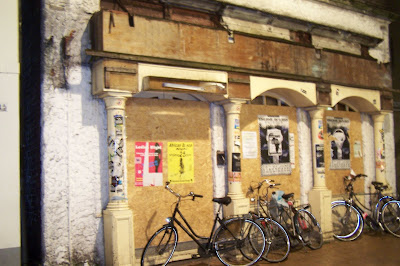hi mom! you're not going to believe what's happened to phil and i! we got pretty lucky, really. today was our last day with the train passes so we were going to Denmark, where we'll be flying home from. our train to hamburg, where we would make a connection to copenhagen, was an hour late, which made us miss the connection, the last one of the night. phil was very worried about our passes running out, having to buy tickets, finding a place to stay, etc. but i had good feelings things would be okay. they actually turned out better than we expected, we got a free hotel voucher for a really nice place! by far the nicest place we've stayed on the trip, and breakfast included! they also gave us passes to use the city transportation and free tickets for the train tomorrow! woohoo! ...
So, pictures from Hamburg--the second-largest city in Germany and the second-largest port in Europe--and the aptly named Europäischer Hof. The first picture is of us stranded at the train station in Bremen.




























































































